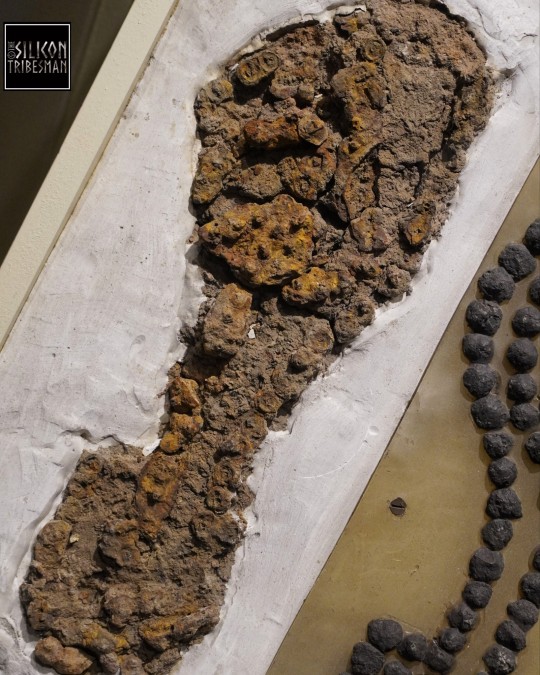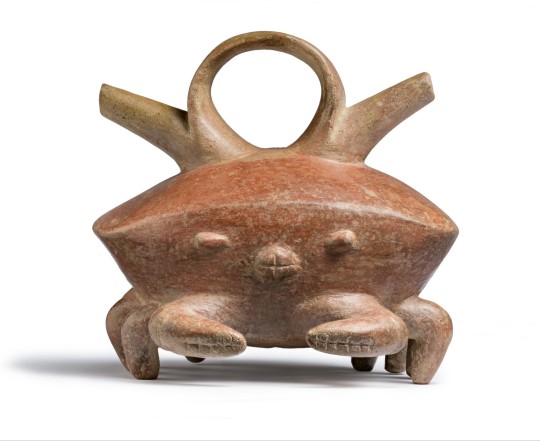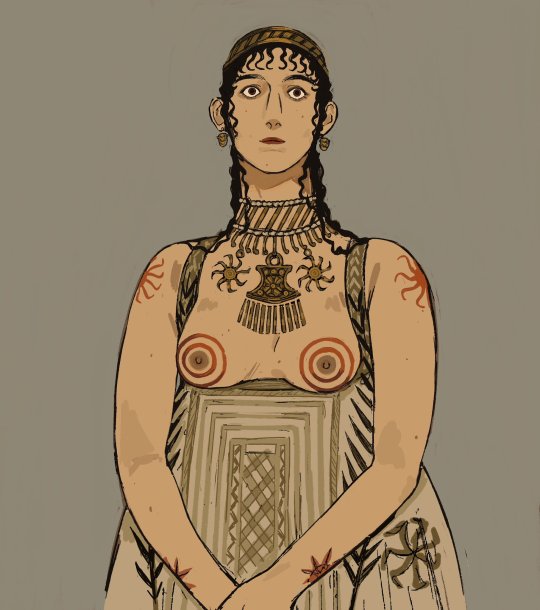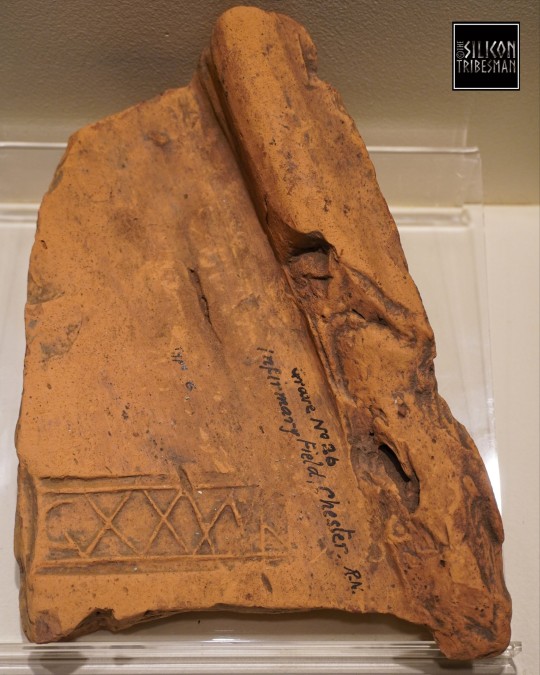#ARCHAEOLOGY
Text

Praetorian guards depicted in a marble relief from the Arch of Claudius, circa year 51. It's interesting to note the detail that the uniforms differ from each other.
226 notes
·
View notes
Text


A Pair Of Roman Hob Nailed Shoes; One Found In-Situ In Clay And The Other Cleaned And Rearranged As Found, Infirmary Field, 1918, The Grosvenor Museum, Chester
#Roman#romans#roman empire#roman shoes#roman britain#roman culture#archaeology#ancient craft#hobnailed#shoes#footwear#ancient cultures#ancient living#chester#grosvenor museum
100 notes
·
View notes
Text

Archaeologists Uncover Rare Blue Frescoes of an Ancient Sanctuary and Servant Quarters in Pompeii
133 notes
·
View notes
Text

Blue room discovered in Pompeii, 2024.
57 notes
·
View notes
Text
#romanticism#عرب تمبلر#bts jungkook#heartcore#aang#padmavati#oil painting#jessica biel#tyler the creator#bookstagram#apollo#monster boyfriend#men's style#archaeology#black
128 notes
·
View notes
Text
#glasses#skirt#hotrod#james bond#natalie dormer#monster boyfriend#archaeology#r@pe play#street style#Sen Mitsuji#gay art
126 notes
·
View notes
Text
https://www.archaeology.org/news/12426-240529-italy-artifact-repatriation

More repatriation, which is great, but the amount of information lost when these things are pulled from the ground by illegal digging is incalculable.
16 notes
·
View notes
Text
A murder mystery film set in a medieval village. After an outbreak of plague, the villagers make the decision to shut their borders so as to protect the disease from spreading (see the real life case of the village of Eyam). As the disease decimates the population, however, some bodies start showing up that very obviously were not killed by plague.
Since nobody has been in or out since the outbreak began, the killer has to be somebody in the local community.
The village constable (who is essentially just Some Guy, because being a medieval constable was a bit like getting jury duty, if jury duty gave you the power to arrest people) struggles to investigate the crime without exposing himself to the disease, and to maintain order as the plague-stricken villagers begin to turn on each other.
The killer strikes repeatedly, seemingly taking advantage of the empty streets and forced isolation to strike without witnesses. As with any other murder mystery, the audience is given exactly the same information to solve the crime as the detective.
Except, that is, whenever another character is killed, at which point we cut to the present day where said character's remains are being carefully examined by a team of modern archaeologists and historians who are also trying to figure out why so many of the people in this plague-pit died from blunt force trauma.
The archaeologists and historians, btw, are real experts who haven't been allowed to read the script. The filmmakers just give them a model of the victim's remains, along with some artefacts, and they have to treat it like a real case and give their real opinion on how they think this person died.
We then cut back to the past, where the constable is trying to do the same thing. Unlike the archaeologists, he doesn't have the advantage of modern tech and medical knowledge to examine the body, but he does have a more complete crime scene (since certain clues obviously wouldn't survive to be dug up in the modern day) and personal knowledge from having probably known the victim.
The audience then gets a more complete picture than either group, and an insight into both the strengths and limits of modern archaeology, explaining what we can and can't learn from studying a person's remains.
At the end of the film, after the killer is revealed and the main plot is resolved, we then get to see the archaeologists get shown the actual scenes where their 'victims' were killed, so they can see how well their conclusions match up with what 'really' happened.
#film ideas#plotbunny#murder mystery#detective stories#period dramas#middle ages#history#archaeology
22K notes
·
View notes
Text


~ Crab Vessel with Double Spout.
Place of origin: Colombia, Calima Region
Period: Ilama Period
Date: 1500 B.C.-A.D. 100
Medium: Ceramics
#ancient#ancient art#history#museum#archeology#ancient history#archaeology#ancient pottery#pottery#south america#crab#crab vessel#calima#Colombia#pre columbian#Ilama Period#1500 b.c.#a.d. 100
17K notes
·
View notes
Text


She
52K notes
·
View notes
Text
so. um. the good news is we found your boyfriend. the bad news is that, well, we sort of…dug him up…in the middle of a car park. in leicester (buckley et al. 2013). leicester, yeah. sorry. they demolished the friary he was hastily interred in when henry viii dissolved all the monasteries. you know how it is. and as it turns out, well, shakespeare was…sort of right about him. scoliosis, yeah, sorry (appleby et al. 2014). if it makes you feel any better we analysed his bones and it turns out he had a pretty high-protein diet before he died (lamb et al. 2014). and he drank so much wine that it changed their chemical composition, which we didn't know could actually happen before we analysed him (lamb et al. 2014), so he was having a good time, at least.
BIBLIOGRAPHY
Appleby, J., Mitchell, P.D., Robinson, C., Brough, A., Rutty, G., and Morgan, B. (2014). The scoliosis of Richard III, last Plantagenet King of England: diagnosis and clinical significance. Lancet 383, 1944.
Buckley, R., Morris, M., Appleby, J., King, T., O’Sullivan, D., and Foxhall, L. (2013). ‘The king in the car park’: new light on the death and burial of Richard III in the Grey Friars church, Leicester, in 1485. Antiquity 87, pp. 519-538.
Lamb, A.L., Evans, J.E., Buckley, R., and Appleby, J. (2014). Multi-isotope analysis demonstrates significant lifestyle changes in King Richard III. Journal of Archaeological Science 50, pp. 559-565.
#found this in my drafts thought it was still funny#archposting#richard III#archaeology#alevelposting#<- contains tudors memes#i've actually met one of the cited authors here they were very cool. we weren't talking about riii though (iron age greece)
9K notes
·
View notes
Text

Roman Stamped Tile
When the graves at the Infirmary Field Roman Cemetery, Chester were excavated, some were found to have been covered over with roof tiles. Many of the tiles were stamped with the name of the 20th Legion - LEG XX.
Grosvenor Museum, Chester
#romans#roman empire#roman#roman tile#archaeology#ancient craft#ancient living#relic#text#cemetery#roman culture#chester#burial#tiles#grosvenor museum#ritual
44 notes
·
View notes
Text

76K notes
·
View notes
Text

Blue room discovered in Pompeii, 2024.
22 notes
·
View notes